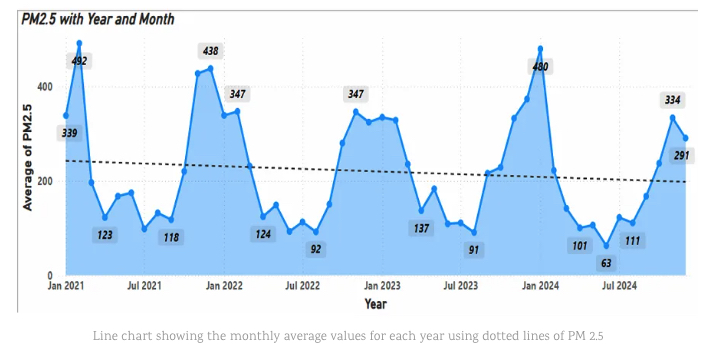DELHI, INDIA, October 22, 2025 (Organiser): Every Diwali, a familiar narrative dominates with headlines that fireworks are to blame for the choking smog which blankets northern India. Television debates and social media campaigns routinely turn the festival of lights into a festival of blame. This time Government and Environmental data present a more complex truth that India’s air pollution crisis goes far beyond Diwali celebrations. The real story lies in year-round emissions, seasonal shifts and structural issues not in a few hours of festive fireworks. Delhi is often portrayed as the face of India’s pollution problem. During winters its Air Quality Index (AQI) stays around 300–400, which is considered hazardous for human health. Each year this seasonal spike is immediately linked to Diwali fireworks. A closer look at regional AQI data paints a different picture altogether.
In 2025, Kapurthala has recorded an AQI of 1153, Jalandhar 1061, Ludhiana 798 and Amritsar 720 a level that surpasses Delhi’s worst readings. These are the figures that were recorded in Punjab not in Delhi. This proves that northern India air pollution is a regional and year-round issue, not a temporary one caused by firecrackers. By blaming Diwali alone, we ignore far more damaging contributors: vehicular emissions, stubble burning, industrial waste and unfavorable weather conditions.The festival lasts for one night, but polluted air is present for months because of these other large-scale combustion activities. A study of AQI patterns between 2021 and 2024 at IIT Kanpur reveals how air quality has evolved over time. The data presented through box plots and line graphs identifies both seasonal variations and the long-term shifts in pollution intensity.
Much more of this detailed report at source.
https://organiser.org/2025/10/22/322163/bharat/myth-of-air-pollution-that-stays-beyond-deepawali-what-data-really-says-about-air-quality-of-bharat-delhi/
A daily summary of world news for Hindus and non-Hindus alike

